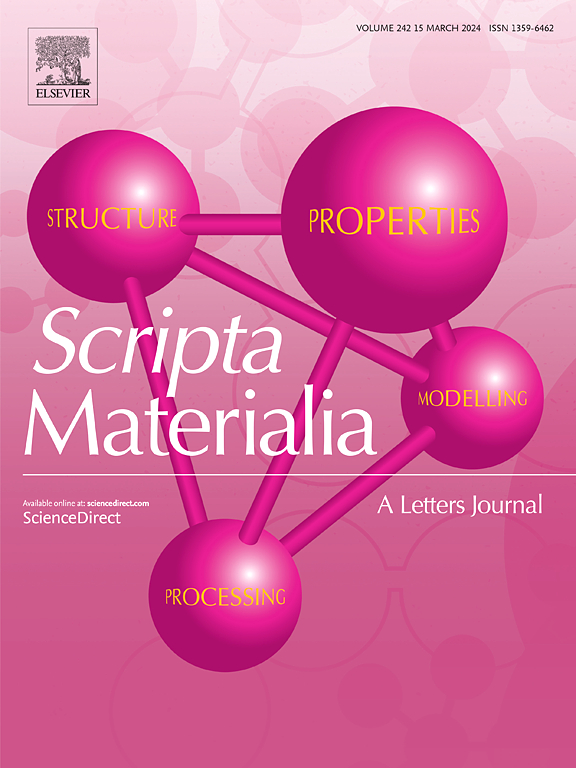Atomic insights into the distinctions between {101¯1} twin boundaries and [112¯0]/60° boundaries in additively manufactured Ti-6Al-4V
IF 5.3
2区 材料科学
Q2 MATERIALS SCIENCE, MULTIDISCIPLINARY
引用次数: 0
Abstract
Subtle variations in interface structures significantly influence materials’ mechanical performance. In additively manufactured Ti-6Al-4V alloy, two dominant interfaces, i.e., Type 2 [110]/60° grain boundaries (GBs) and {101}<10> ([110]/57.2°) twin boundaries (TBs), share the same rotation axis with a slight ∼2.8° misorientation discrepancy. However, their precise atomic structural disparities remain unclear, hampering comprehension of their mechanical response and microstructure optimization. This study conducts an atomic-scale investigation on these two interfaces in additively manufactured Ti-6Al-4V alloy, revealing that {101} TBs mainly consist of coherent TBs adorned with dispersed glissile twinning dislocations. In contrast, Type 2 [110]/60° GBs exhibit serrated features with periodic arrays of immobile disconnections containing misfit dislocations. These misfit dislocations, comprising 〈a60〉 dislocations, help accommodate the ∼2.8° inclination between {101} planes of adjacent α (or α′) variants that form Type 2 [110]/60° GBs. These findings offer atomic-scale insights into the structural design of additively manufactured dual-phase titanium alloys.

增材制造Ti-6Al-4V中{101¯1}孪晶界与[112¯0]/60°晶界区别的原子观察
界面结构的细微变化会显著影响材料的力学性能。在增材制造的Ti-6Al-4V合金中,有两个主要界面,即2型[112¯0]/60°晶界(gb)和{101¯1}<;101¯2¯>;([112¯0]/57.2°)双边界(TBs),共享相同的旋转轴,有轻微的~ 2.8°的定向偏差。然而,它们的精确原子结构差异仍然不清楚,阻碍了对其力学响应和微观结构优化的理解。本研究在原子尺度上对增材制造Ti-6Al-4V合金的这两个界面进行了研究,发现{101¯1}TBs主要由共调TBs组成,并伴有分散的滑晶孪晶位错。相比之下,2型[112¯0]/60°gb表现出锯齿状特征,具有包含失配位错的固定断开的周期性阵列。这些错配位错,包括< 60 >位错,有助于适应相邻α(或α ')变体{101¯1}平面之间的~ 2.8°倾斜,形成类型2[112¯0]/60°gbbs。这些发现为增材制造双相钛合金的结构设计提供了原子尺度的见解。
本文章由计算机程序翻译,如有差异,请以英文原文为准。
求助全文
约1分钟内获得全文
求助全文
来源期刊

Scripta Materialia
工程技术-材料科学:综合
CiteScore
11.40
自引率
5.00%
发文量
581
审稿时长
34 days
期刊介绍:
Scripta Materialia is a LETTERS journal of Acta Materialia, providing a forum for the rapid publication of short communications on the relationship between the structure and the properties of inorganic materials. The emphasis is on originality rather than incremental research. Short reports on the development of materials with novel or substantially improved properties are also welcomed. Emphasis is on either the functional or mechanical behavior of metals, ceramics and semiconductors at all length scales.
 求助内容:
求助内容: 应助结果提醒方式:
应助结果提醒方式:


